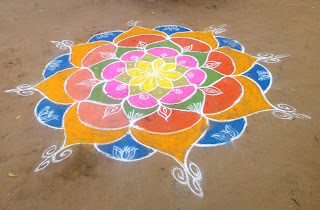 |
| Banana plant care in SEVAI Kalanjium farm in Amoor |
“Integrated
weed management is necessary for Banana cultivation’ Sakthivel of Kalanjuim
farm in Amoor (a project of SEVAI) oriented the members of women self help
group farmers of Amoor area in Kalanjium centre. He further detailed, “Banana is one of the most important
major fruit crops grown in Tamil Nadu. In Tamil Nadu, bananas are so
predominant and popular among people that poor and rich alike like the fruit.
Considering the nutritive value and fruit value of bananas, it is the cheapest
among all other fruits in the country. India is believed to be one of the
centres of origin of banana. Fertility of soil is very important for successful
cultivation, as banana is a heavy feeder. Banana is one of the few fruits,
which has a restricted root zone. Hence, depth and drainage are the two most
important considerations in selecting the soil for banana. The soil suitable
for banana should be 0.5 1m in depth, rich, well drained, fertile, moisture retentive,
containing plenty of organic matter. Banana is grown in Tamil Nadu on a variety
of soils of the Cauvery delta and the red lateritic soil of the hilly tracts.
Banana is essentially tropical plant requiring a warm and humid climate. Yields
are higher when temperatures are above 24°C for a considerable period. Poovan is a leading commercial
cultivar grown in Tamil Nadu. It is generally cultivated as a perennial crop.
Tamil Nadu is the leading producer of Poovan cultivar owing to its climatic and
marginal soil condition. Poovan is also commercially cultivated for leaf
industry throughout Tamil Nadu. Fruit is slightly acidic, firm and has typical
sour-sweet aroma. Fruits turn to attractive golden yellow on ripening. Medium
sized bunch, closely packed fruits, good keeping quality and resistant to fruit
cracking is its plus points. Nendran
is a popular variety where it is relished as a fruit as well as used
for processing. Commercial cultivation of Nendran has picked up rapidly in
Tamil Nadu in the recent past. Nendran is known to display considerable
diversity in plant stature, pseudostem colour, presence or absence of male
axis, bunch size, etc. Bunch has 5-6 hands weighing about 12-15 kg. Fruits have
a distinct neck with thick green skin turning buff yellow on ripening. Fruits
remain as starchy even on ripening. Monthan
is a widely cultivated variety for processing. Monthan is a fairly
tall and robust plant bearing bunches of 18-20 kg after 12 months. Fruits are
bold, stocky, knobbed and pale green in colour. The skin is usually green.
Apart from its culinary use of fruits, pseudostem core is a highly relished
vegetable with many medicinal properties. Monthan is also cultivated for
production of leaves in Trichy district of Tamil Nadu. Commercial bananas are seedless
and propagated exclusively by vegetative means. The banana has a reduced
underground stem, called the rhizome, which bears several buds. Each of these
buds sprouts and forms its own pseudostem and a new bulbous rhizome. These
daughter plants are called suckers. Banana is mostly propagated by rhizomes and
suckers viz. sword suckers and water suckers. The fertilizer dose depends upon
the fertility of soil and amount of organic manure applied to the crop. Spading
is commonly used and normally four spadings a year are effective in controlling
weeds. Integrated weed management by including cover crops, judicious use of
herbicides, intercropping and hand weeding wherever necessary will contribute
in increased production”. -Govin



